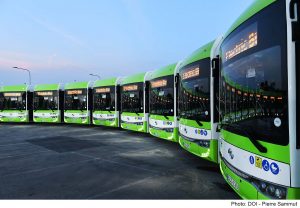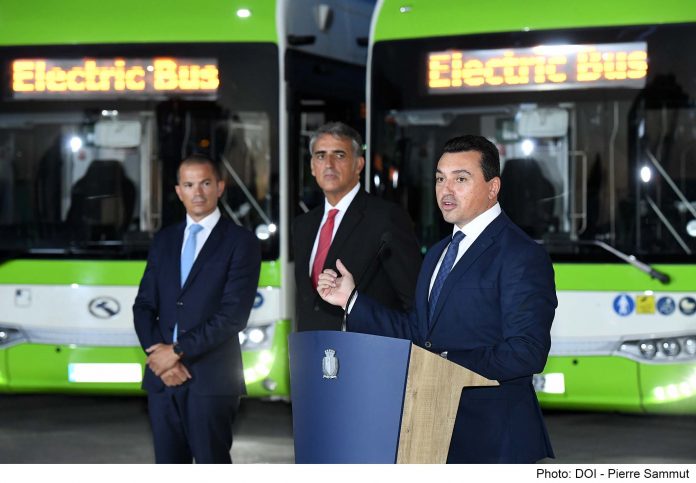Malta Public Transport is announcing a historic investment of €20 million in the
electrification of the public transport system with the inauguration of its first electric bus charging depot alongside the launch of 30 brand new, fully electric, zero-emission buses.
“We are proud to usher in a new era of sustainable public transport in Malta with the launch of our electric buses and charging depot,” remarked Felipe Cosman, Malta Public Transport Chairman, during the official launch ceremony.
“This significant investment reflects our commitment to providing a greener, more efficient, and customer-centric transportation system for our community. Together, we can make a significant difference in our journey towards a cleaner and more sustainable future for Malta’s transportation”.
The official launch event was inaugurated by the Minister for Transport, Infrastructure, and Capital Projects, Aaron Farrugia, emphasizing the government’s support for this pioneering endeavour.
Minister Farrugia emphasized how the Government is investing heavily in alternative transport, with public transport as a priority to reduce the dependency on personal cars. “The introduction of free public transport for everyone resulted in a large increase in passenger demand. This is why we need to continue working together as the regulator and the operator so that the country gets a service of quality, whilst effecting changes in the routes and frequencies to accommodate the needs of passengers and new demographics. All this while we continue with our commitment to expand with the electrification of the fleet”, he explained.
This investment will lead to increased service frequencies on key routes, resulting in reduced waiting times and more available space on buses. It also aligns with the goal of reducing traffic congestion and pollution on the roads by encouraging sustainable transportation alternatives.
“In August 2023, we reached a significant milestone by carrying over 6 million passengers for the first time,” announced Felipe Cosmen, Chairman of Malta Public Transport. “This is extremely positive. It is a strong sign of confidence in our bus operation and shows that people in Malta are willing to use the bus. However, we cannot stop here. We need to continue to make public transport even more attractive. We are collaborating with the Ministry of Transport, Infrastructure and Capital Projects, in order to identify feasible short-term and medium-term solutions that will alleviate congestion on our roads.”

The new 12-metre King Long Amigo electric buses are equipped with modern amenities such as accessibility features, air conditioning, USB chargers, and free Wi-Fi, enhancing the passenger experience with a quieter and smoother ride. These electric buses are equipped with advanced battery technology, delivering a range of up to 300 kilometres on a single charge. Most buses can be charged overnight, ensuring uninterrupted service from morning to evening, with the option for fast charging at the electric bus charging depot during the day.
The introduction of these electric buses will significantly reduce tailpipe emissions, cut greenhouse gas emissions by approximately 70%, minimize noise pollution, and promote energy efficiency, resulting in an estimated reduction of 1,800 tonnes of CO2 emissions per year compared to diesel buses.
The charging stations offer a wide power range, from 20kWh to 240kWh, thanks to a unique two-socket solution. The 3MW charging system, serving up to 30 buses
concurrently, is a pioneering initiative in Malta.
Malta Public Transport’s commitment to electrification began in January 2020 with the pilot of an electric bus in the Maltese islands. Last year, two fully-electric 12-metre buses were introduced into the fleet, allowing for comprehensive testing and preparation for the launch of the new electric fleet.
In addition to the electric buses, Malta Public Transport is also piloting an electric minibus to assess its performance on low-demand routes and in village cores, offering a smaller capacity option.










